A pleasant surprise arrived in the mail this week—the November/December 2018 issue of Handwoven magazine. Guess what?! My Stained Glass Scarf made it to the front cover!
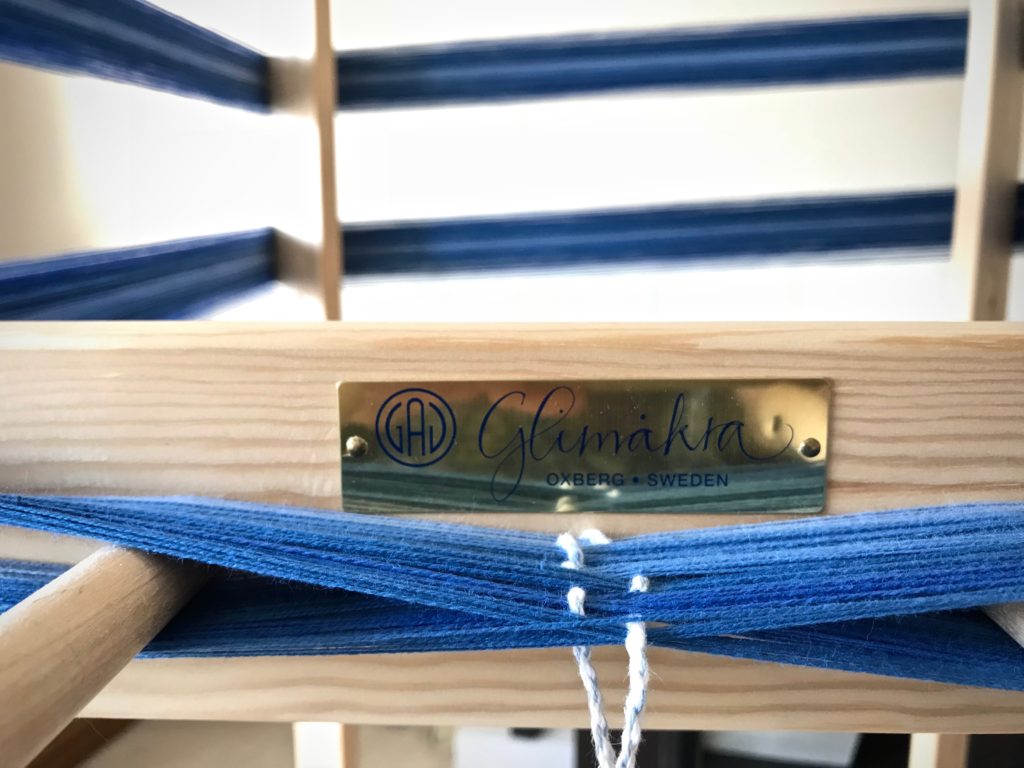
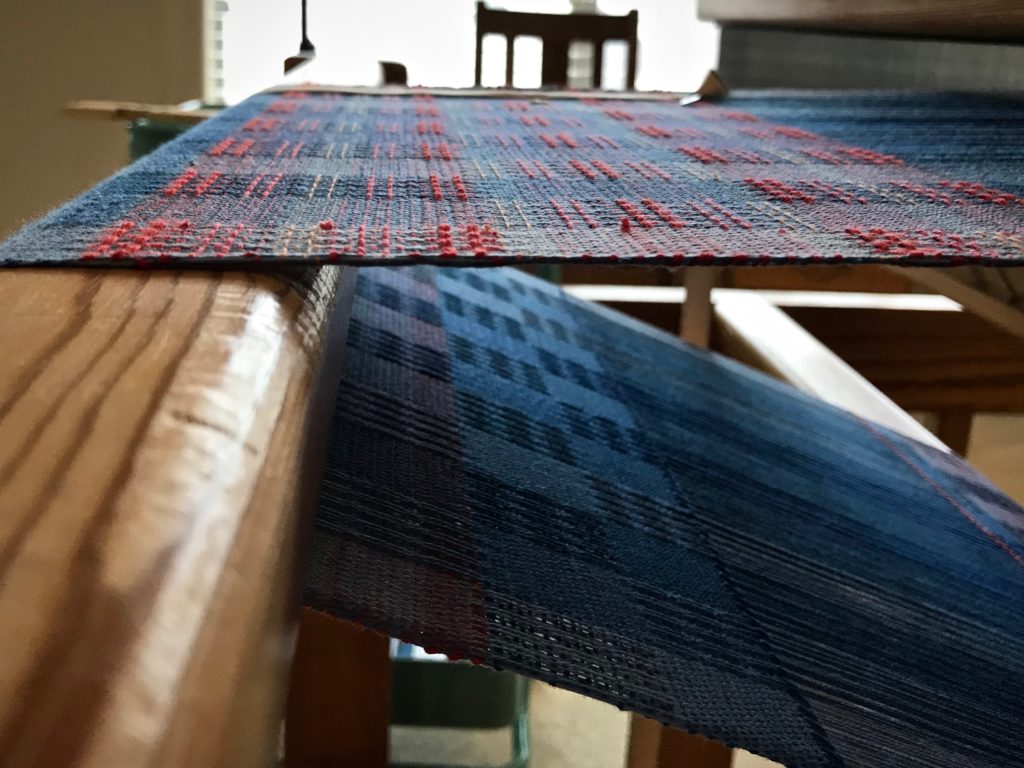
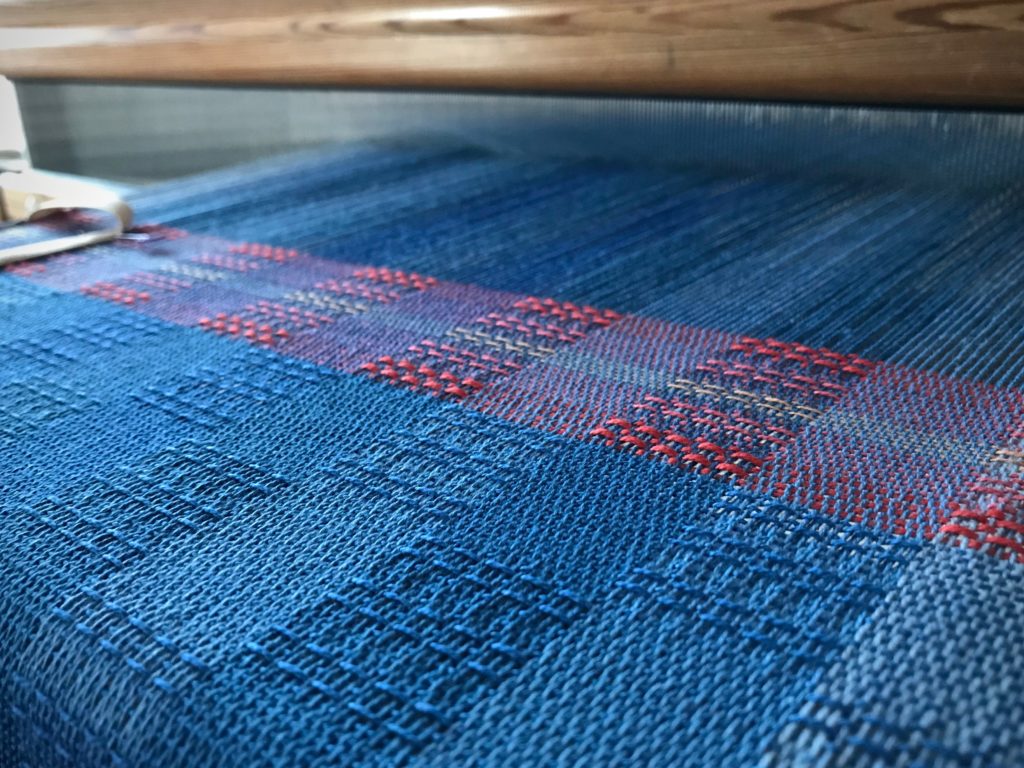
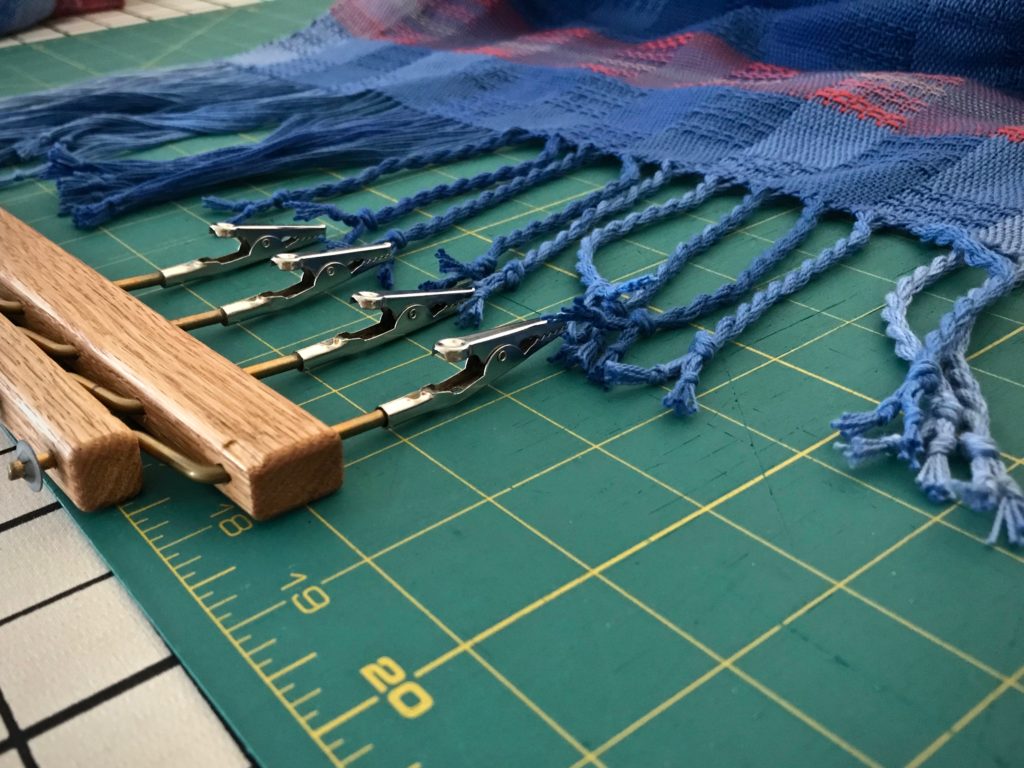
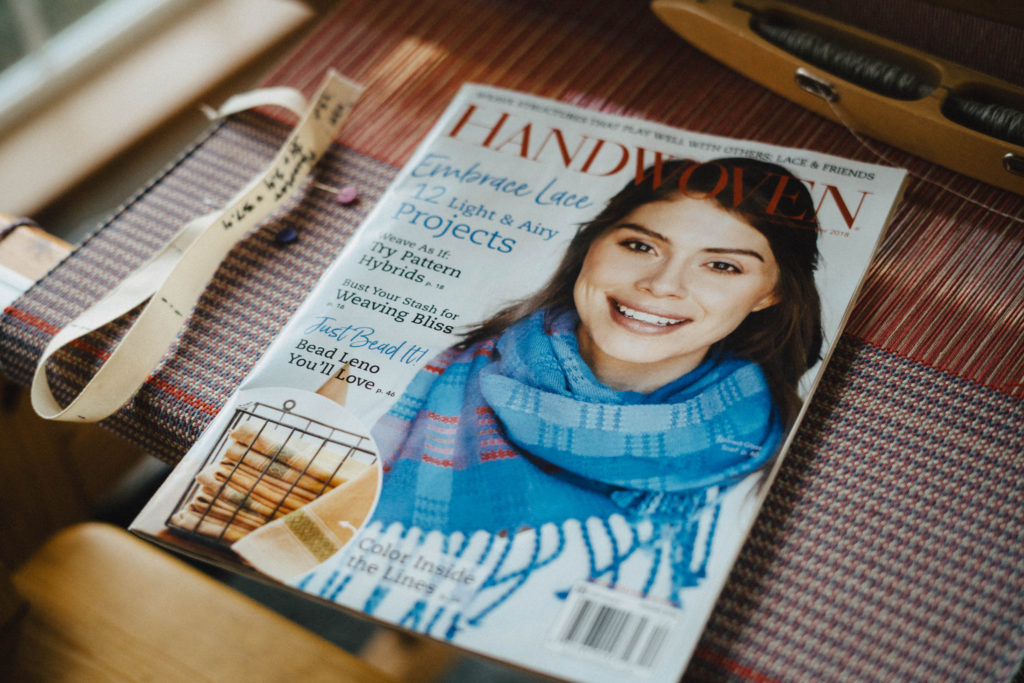
May your day be filled with pleasant surprises.
Happy Weaving,
Karen
a handweaver's journey
A pleasant surprise arrived in the mail this week—the November/December 2018 issue of Handwoven magazine. Guess what?! My Stained Glass Scarf made it to the front cover!





May your day be filled with pleasant surprises.
Happy Weaving,
Karen
What a delight to weave with just one shuttle for a change! It is relaxing to weave this Swedish lace wrap. Even moving the temple and getting up to advance the warp becomes part of the natural rhythm of weaving.
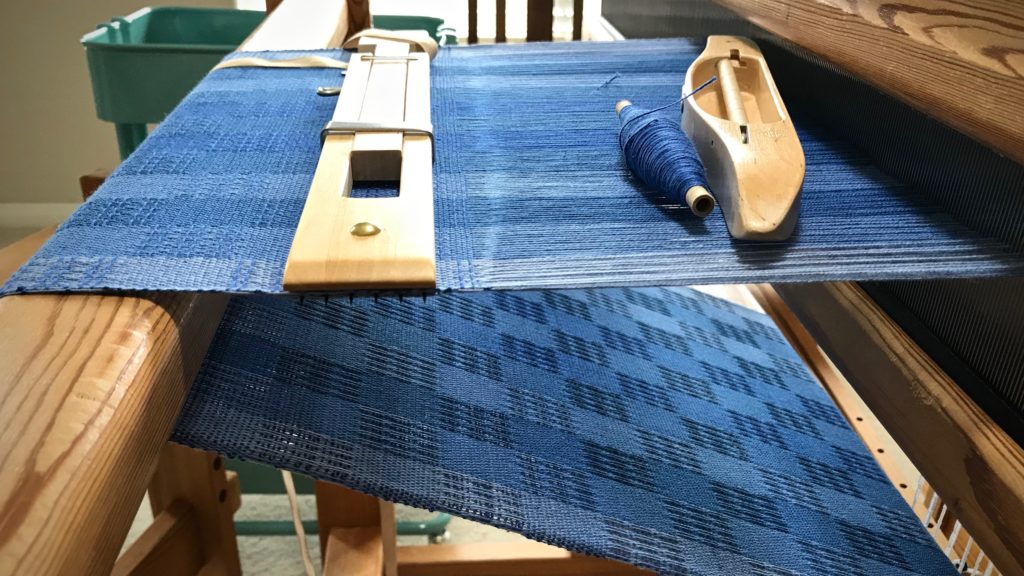
There is one thing that breaks my stride. An empty quill. If I have to stop in the middle of a sequence to wind more quills, I lose momentum and sometimes I even lose my place. Solution? Stop ahead of time at a sensible place in the sequence and wind quills to put in my loom basket. Then, while weaving, it’s a seamless motion to change quills and keep going. It’s a pause instead of a dead stop.
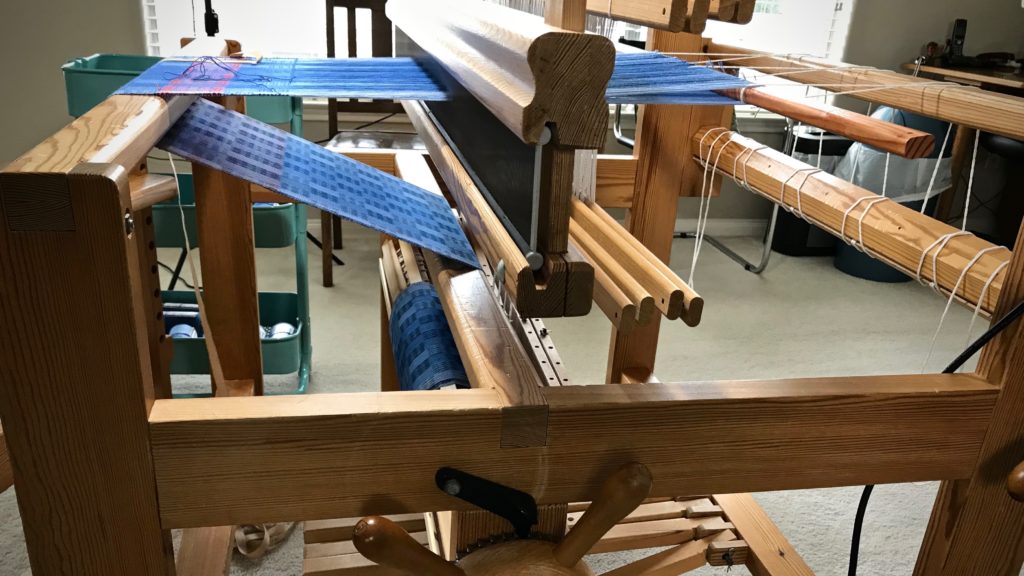
We need to prepare for those times when people seem harder to love. It helps to think ahead, and fill our heart basket with the thoughts of kindness and humility that are essential to keep going. We have a good reason to love each other. We have been loved first. God so loved us that he gave his son. This is the Christmas news. God sent his son to be born here on this earth to be with us hard-to-love people and to save us. That’s good news worth celebrating!
May your heart basket be filled with love.
Christmas Blessings,
Karen
This linen scarf is for embellishment, not for warmth. Wear it as a summer shawl, and it will make you feel pretty without adding any weight to your shoulders. Making this scarf was like weaving air, and wearing it is like wearing air.
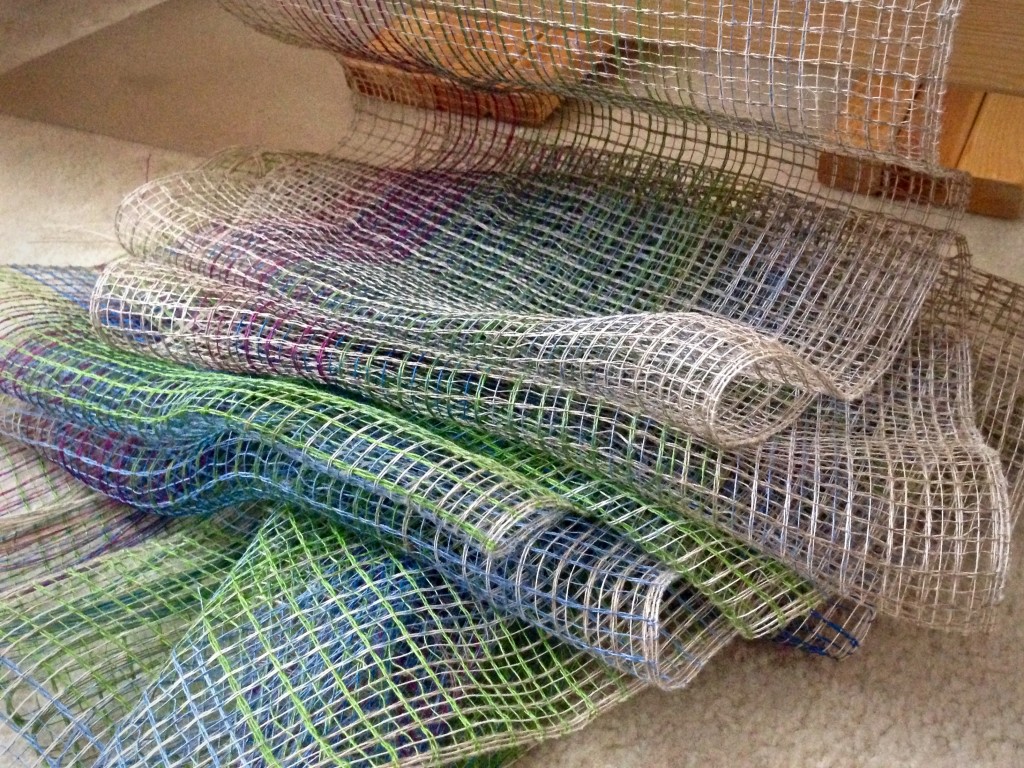
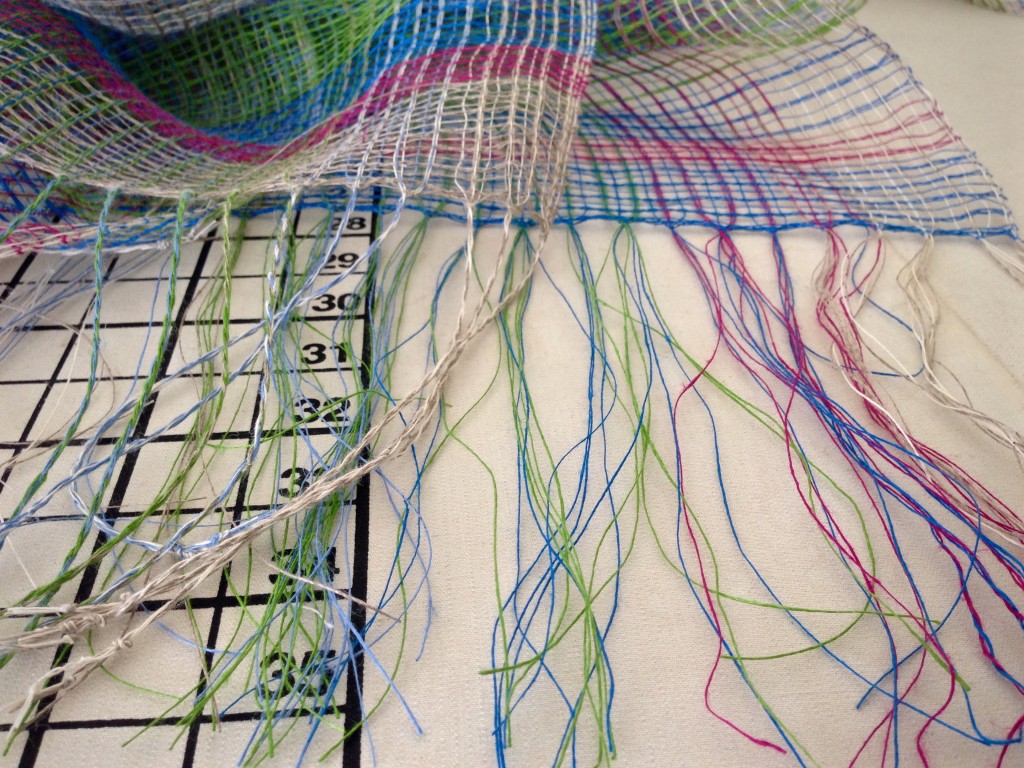
The wrinkly nature of linen gives character to this netting-like lace weave. In The Big Book of Weaving, this draft is written for a project using paper yarn to make room dividers. I didn’t know if it would work to substitute linen for paper yarn… Or, if the fabric off the loom would work as scarves… Result? Two fabulously light linen scarves, wearable even in Houston.
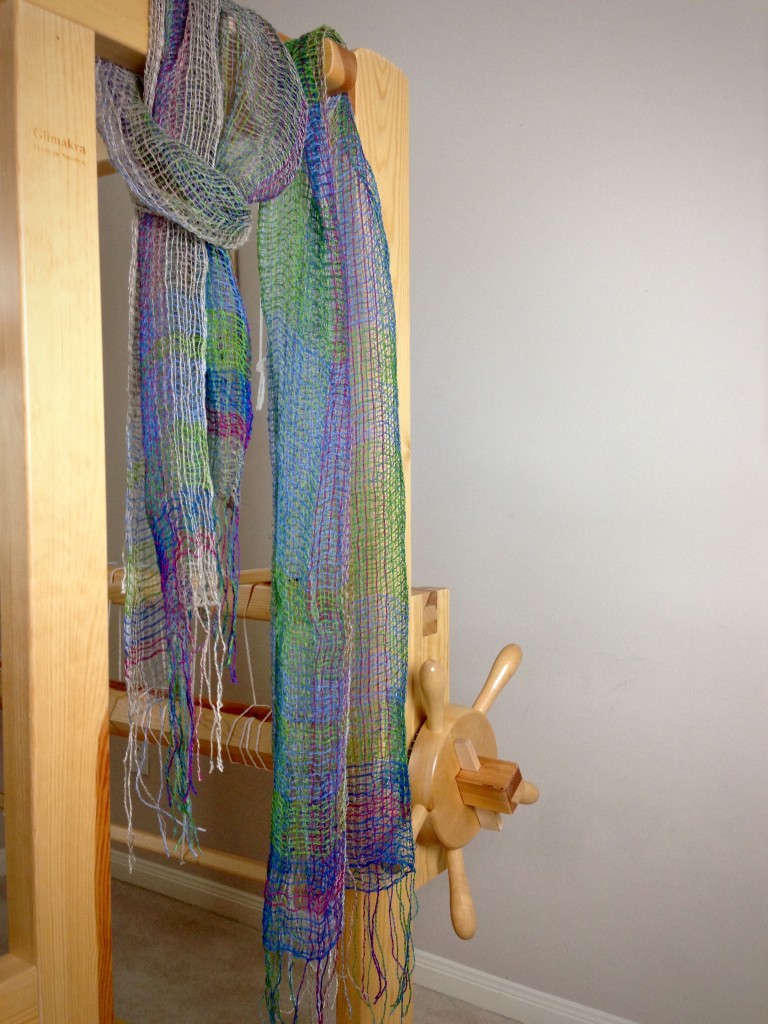
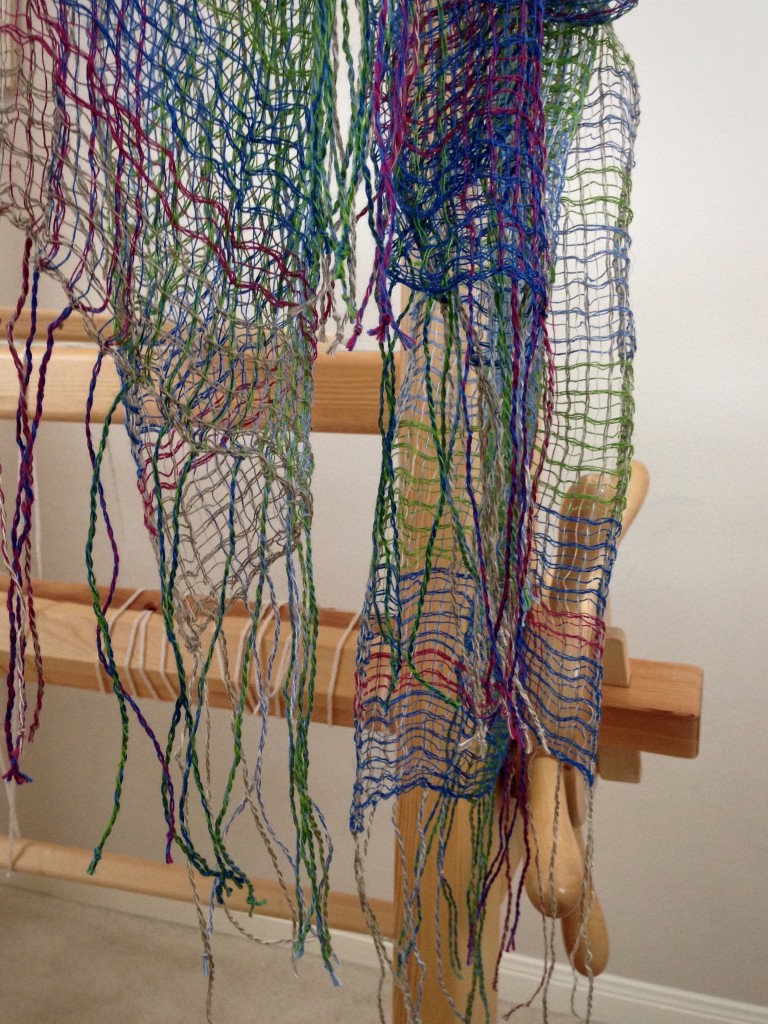
Concerns that turn into burdens are like scarves that are too heavy for the present season. We keep wearing the scarf, even though it makes us miserable. Our Heavenly Father is a burden lifter who knows our concerns. He bears our burdens. Though he is great and glorious, he lifts the burdens that are on our shoulders and carries them for us. In place of the burdens, we get to wear peace instead. Light and airy, and wearable with everything… peace.
May your burdens become light as air.
With grace,
Karen
Steve and I returned this week from travels to The Philippines. We had a wonderful time celebrating Thanksgiving there with our son’s family in Makati. During our eleven-day visit, I encountered many examples of beautiful handwoven articles and other fascinating textile goods. It probably won’t surprise you that I tucked a few textile treasures in my suitcase to bring home with me. (Remember last year? Quiet Friday: Philippine Textiles)
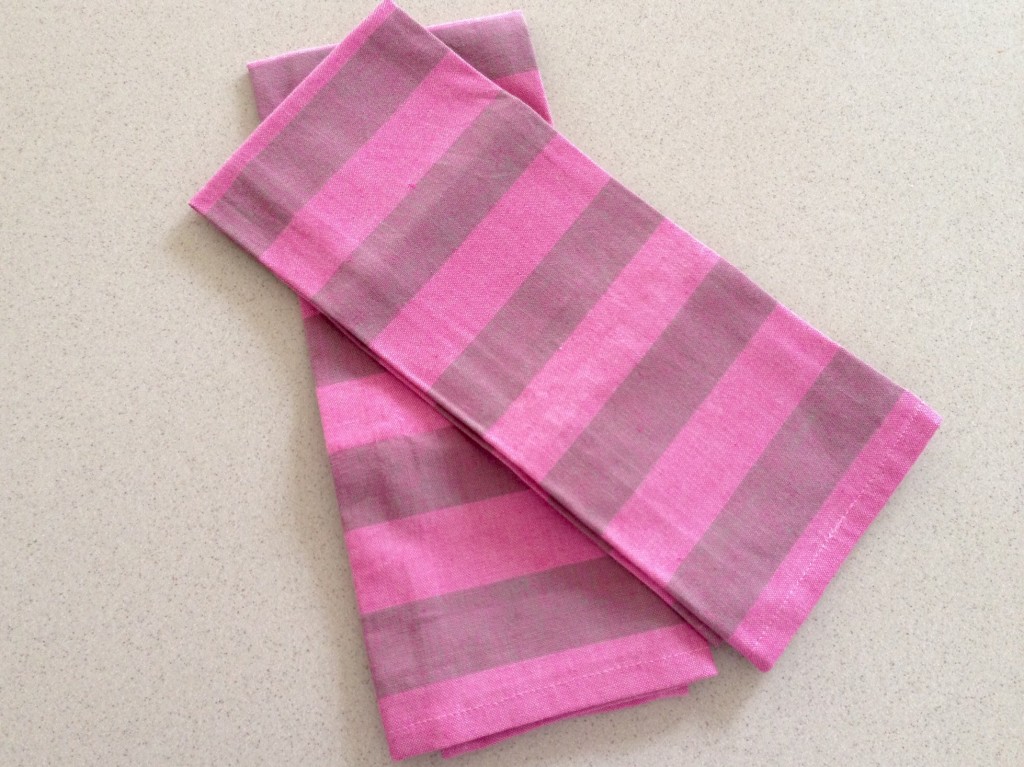
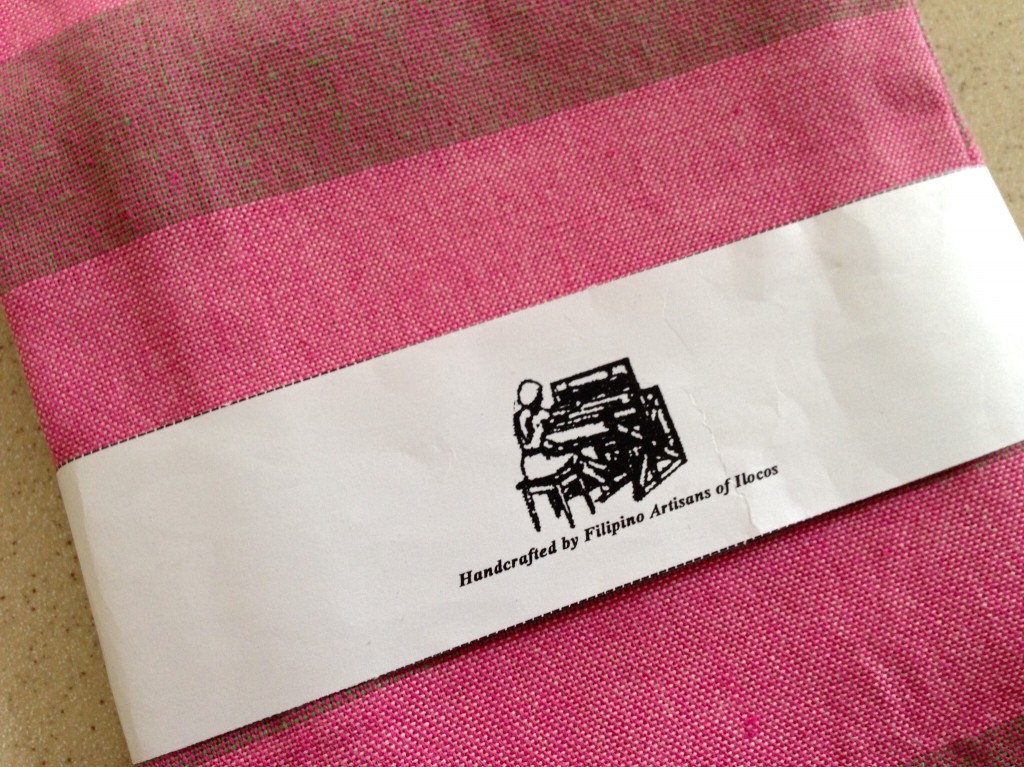
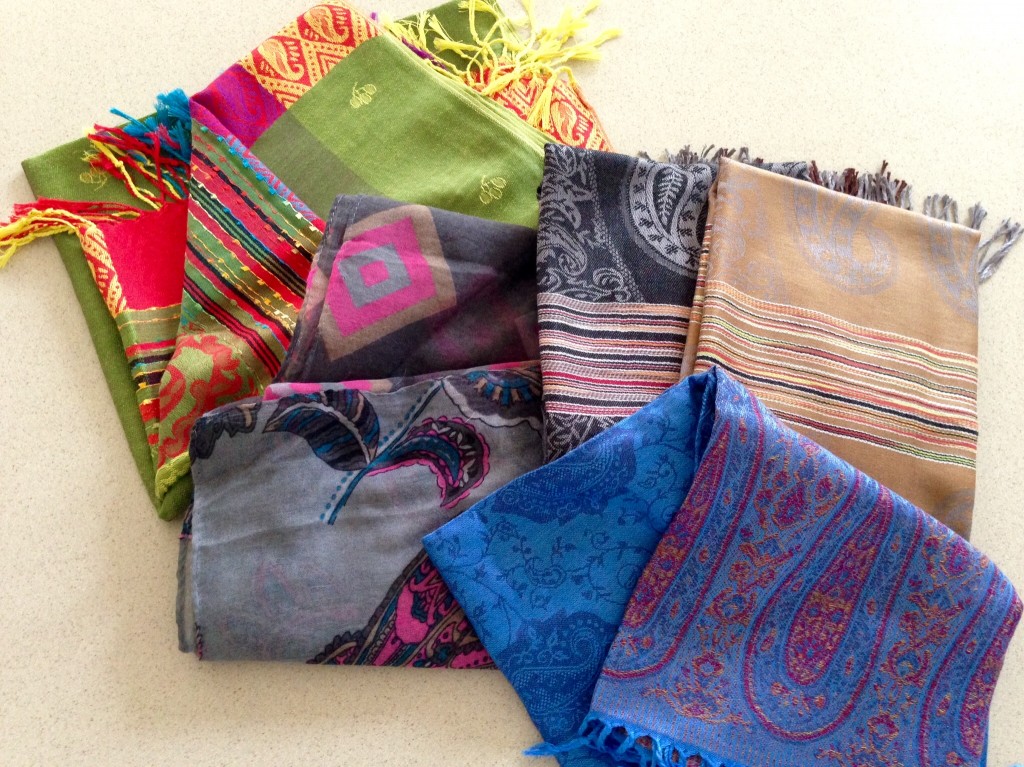
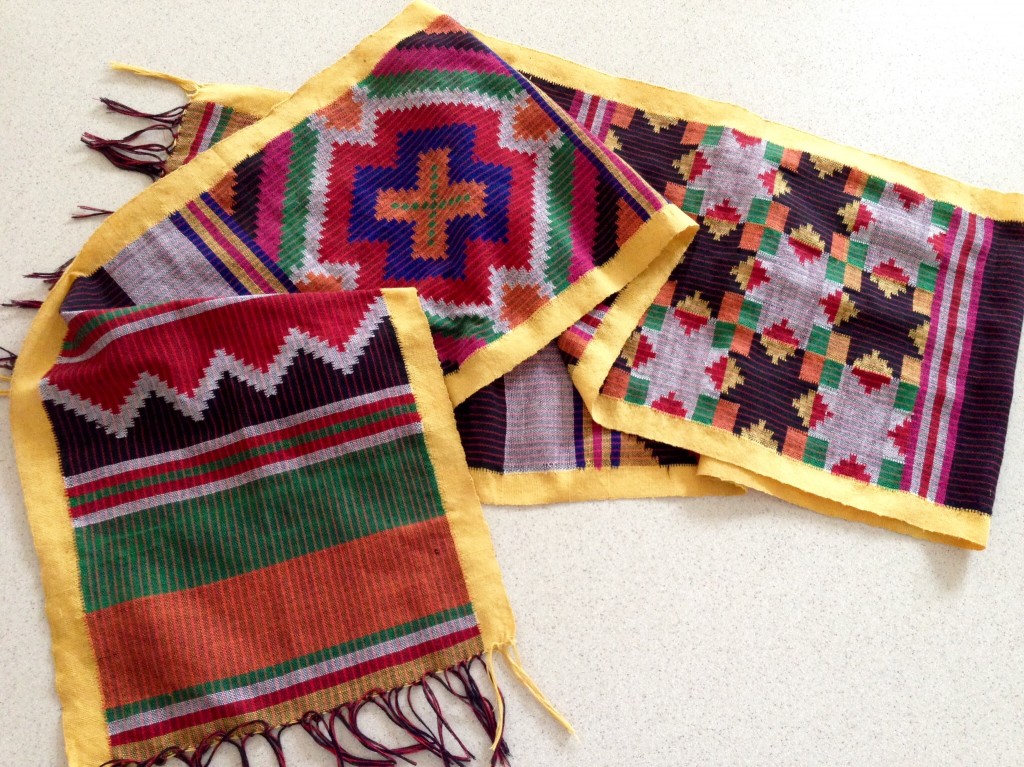
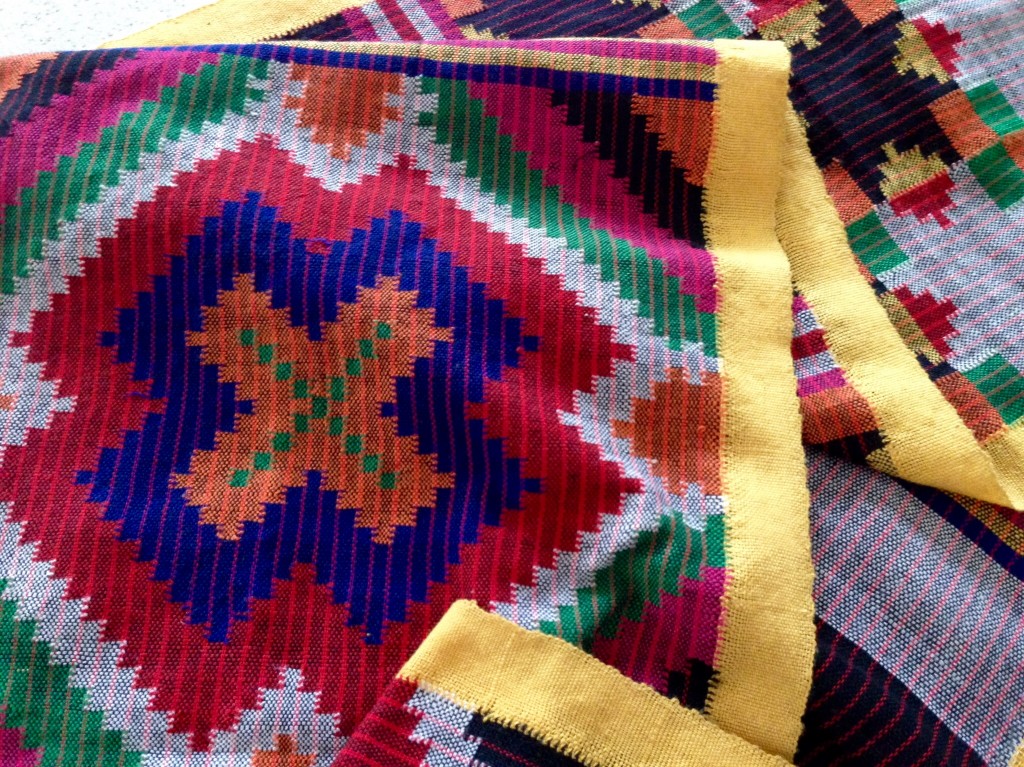
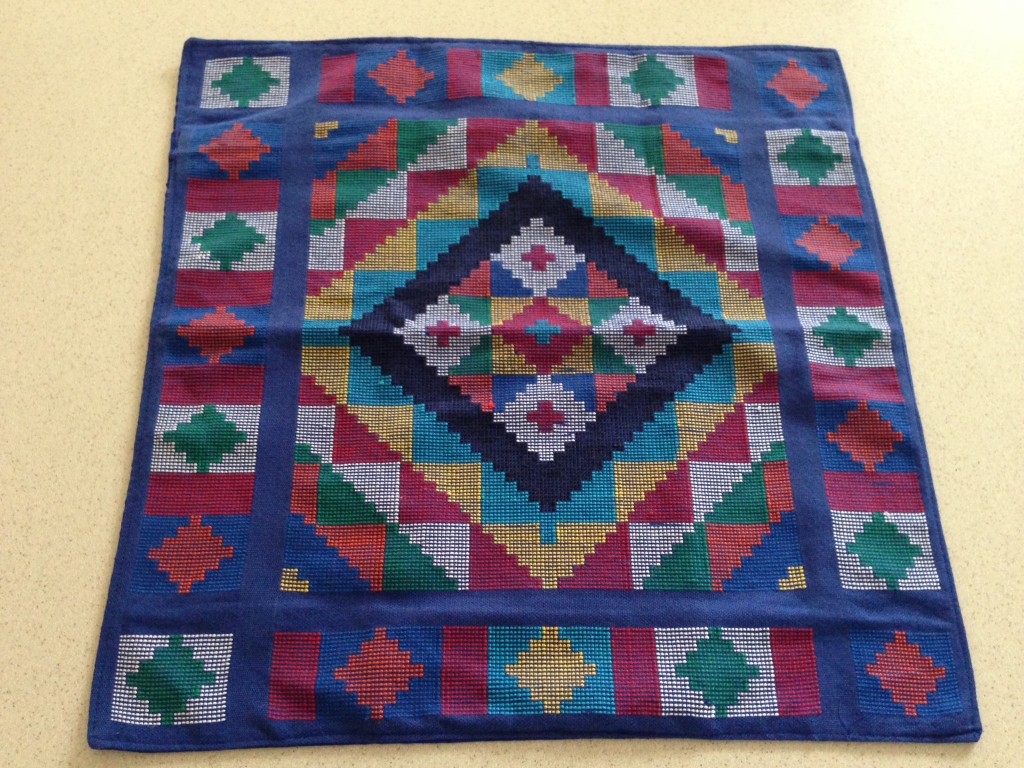
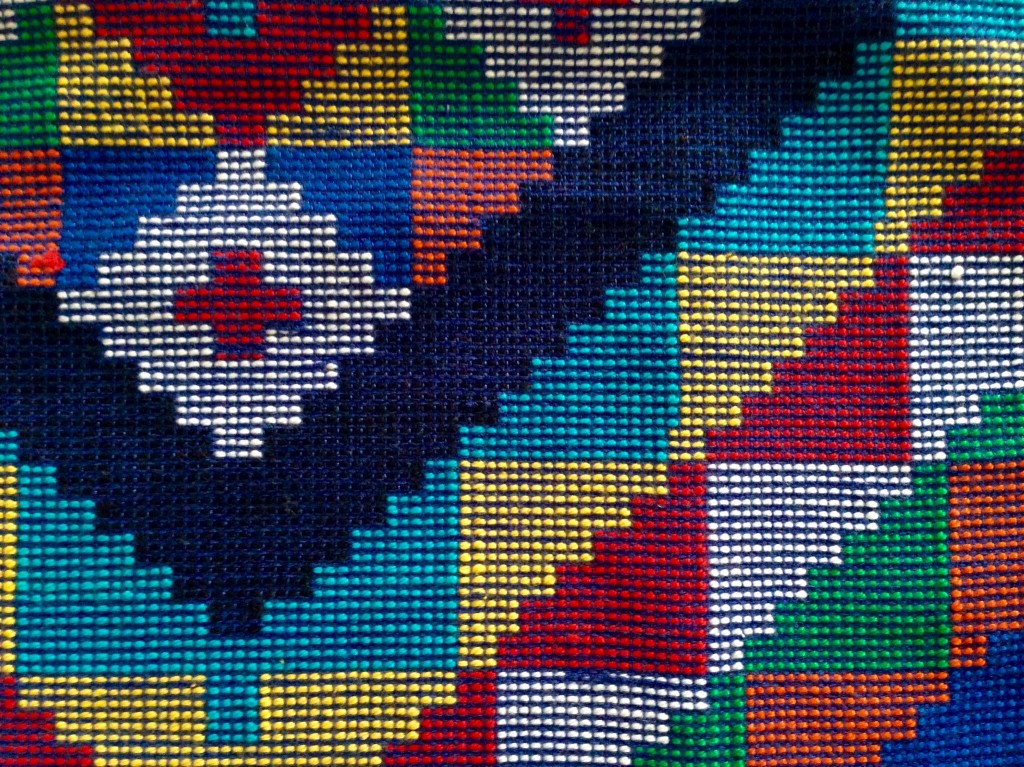
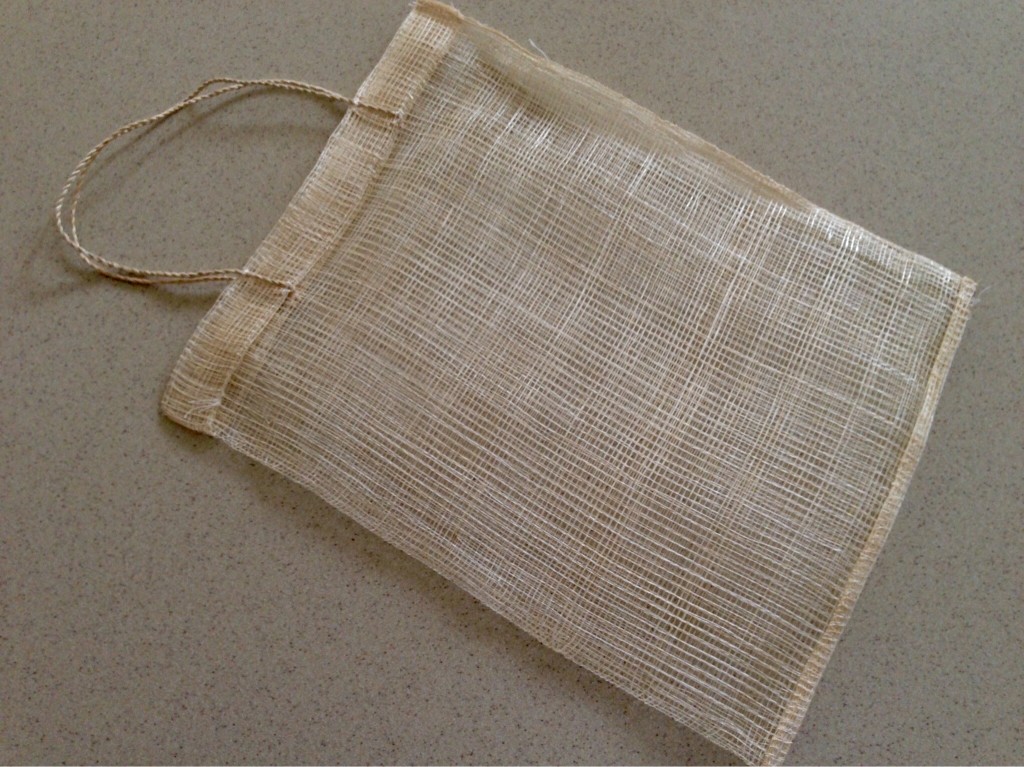
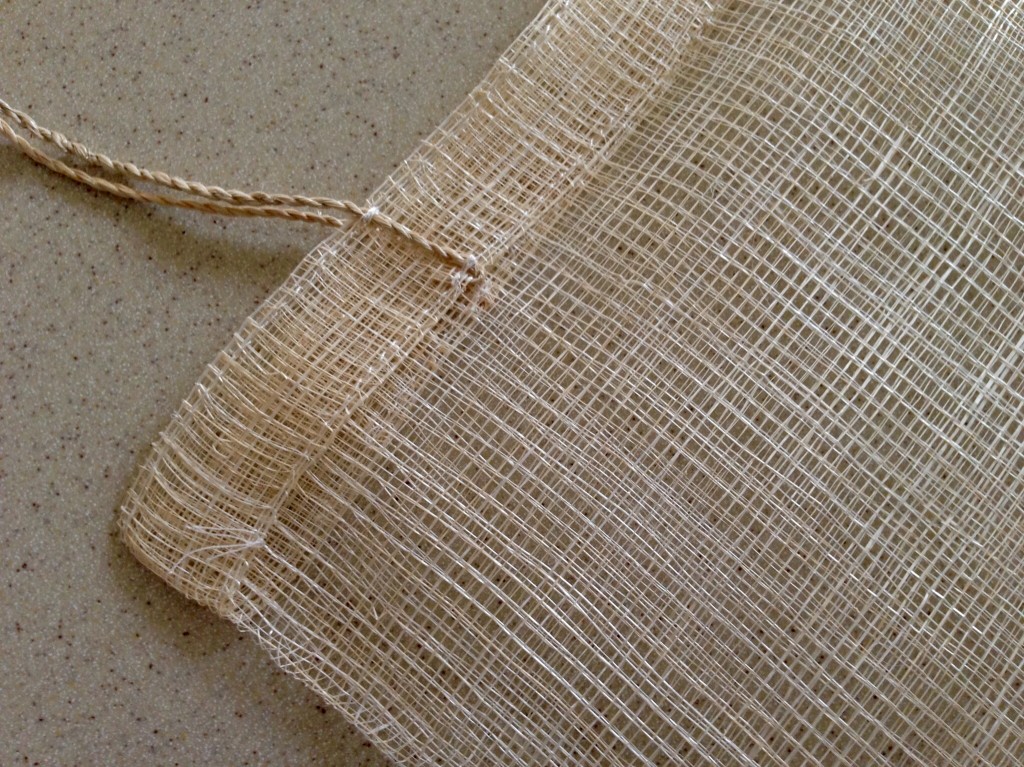
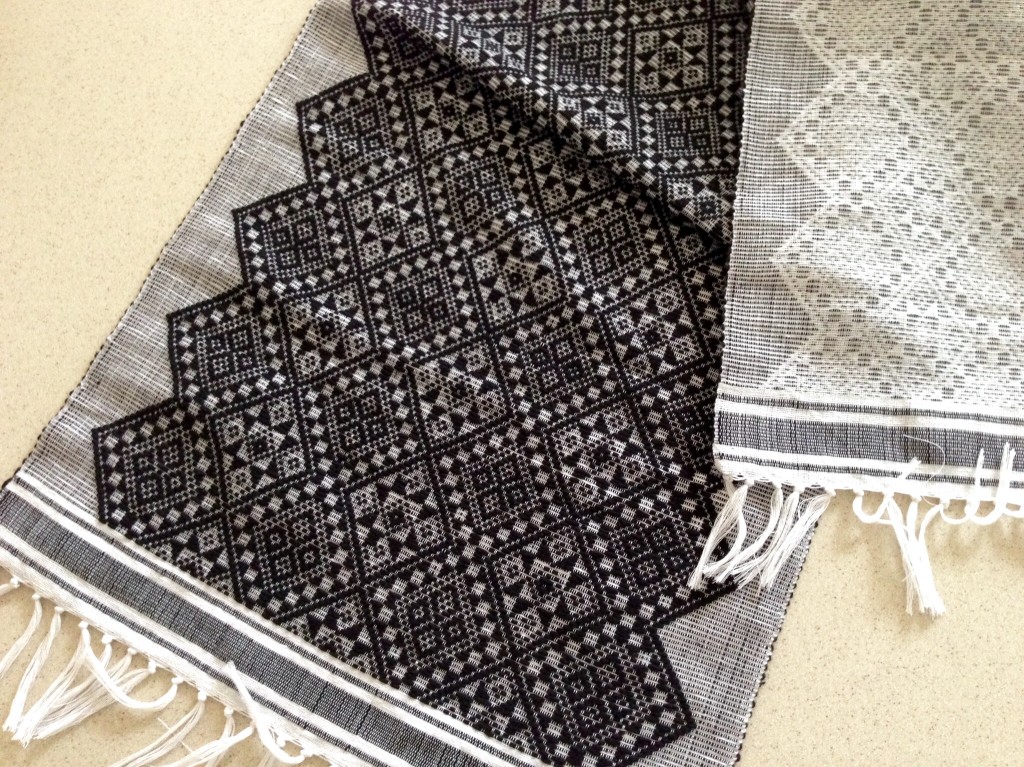
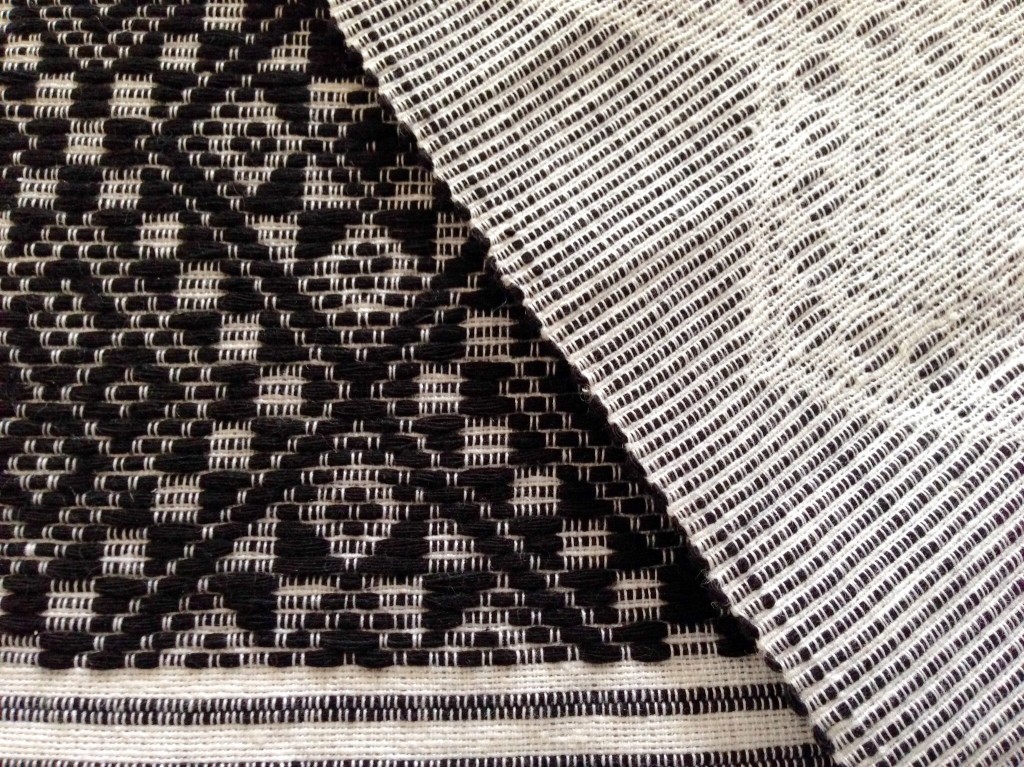

May you find textile treasures in your travels.
PS Two more new rag rugs from my latest run of rugs are now in the Etsy shop, if you are interested. These two may be my favorite yet!
A little jet lagged,
Karen
If I line up all my weaving shuttles, end to end, how far do you think they will reach? The accumulation started slowly, adding a shuttle here and there, as needed. My husband contributed to my collection by handcrafting some of the shuttles for me. “I could use a stick shuttle in such-and-such a size.” “Okay, dear,” he would say, before going out to the garage to whip up yet another yardstick shuttle for my rigid heddle loom.
Ski shuttles are for rag weaving. Boat shuttles are for almost everything else. Most of my boat shuttles are traditional Swedish shuttles. All these fascinating shuttles, such simple tools, work the wonder of weaving.
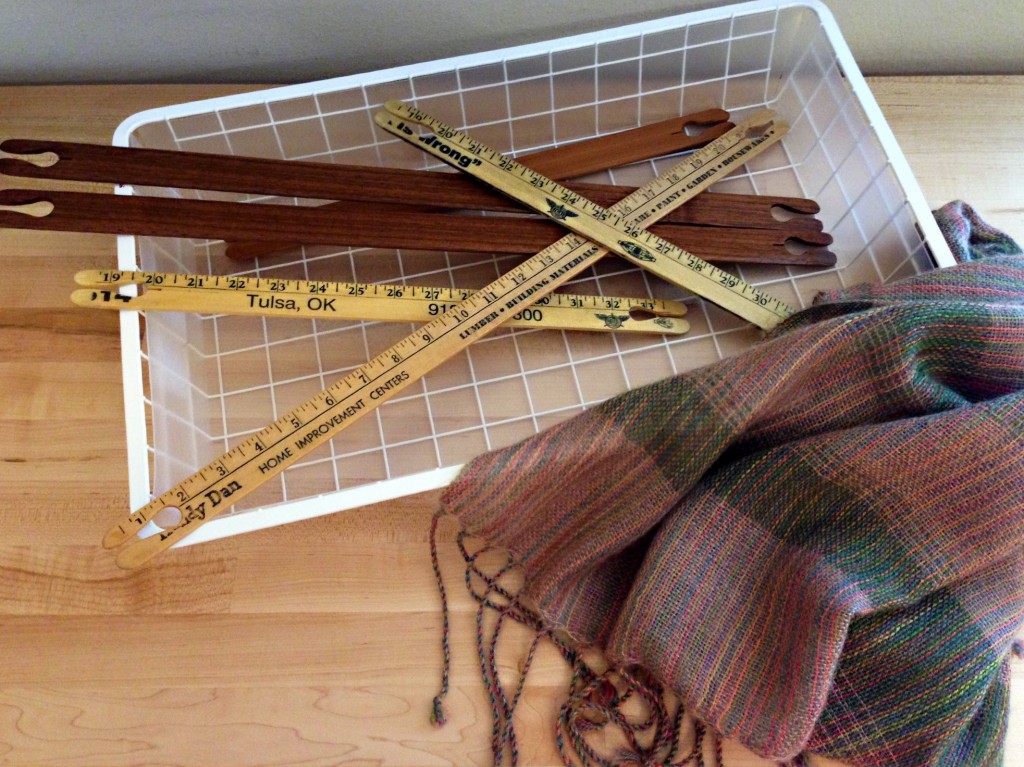
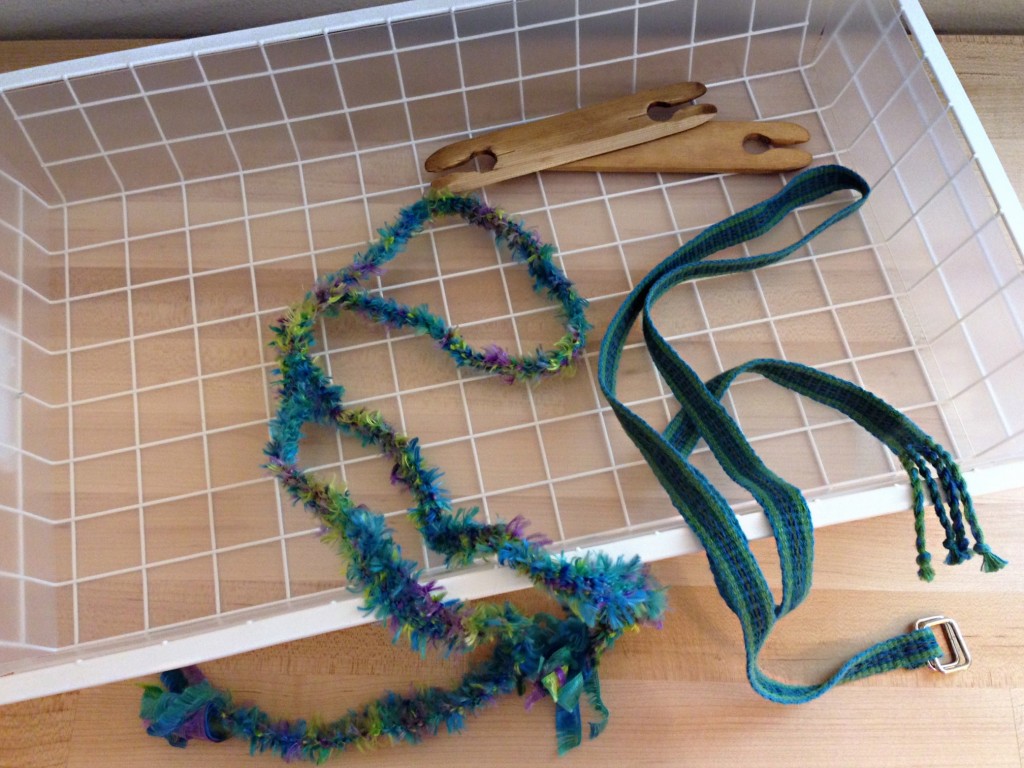
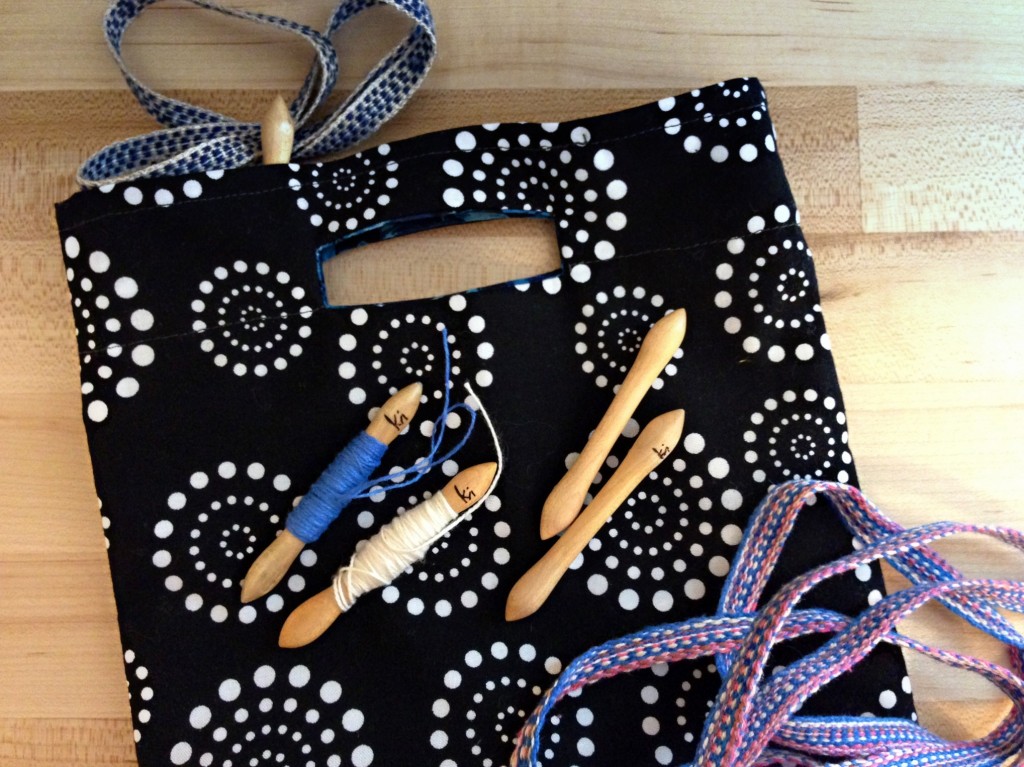
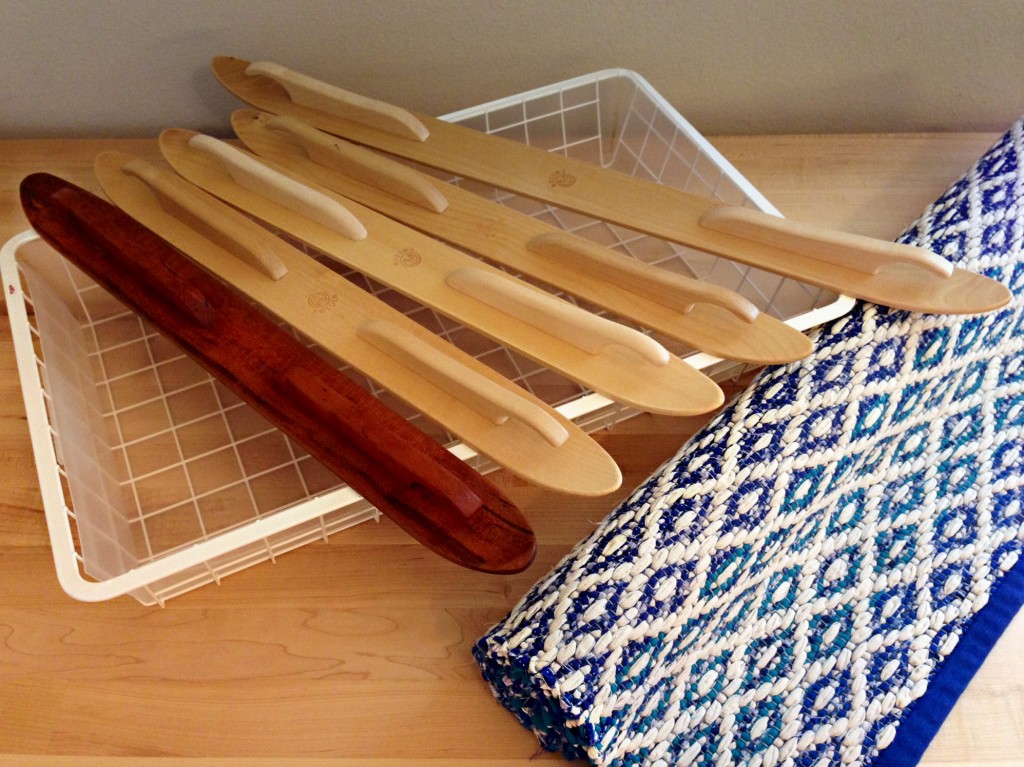
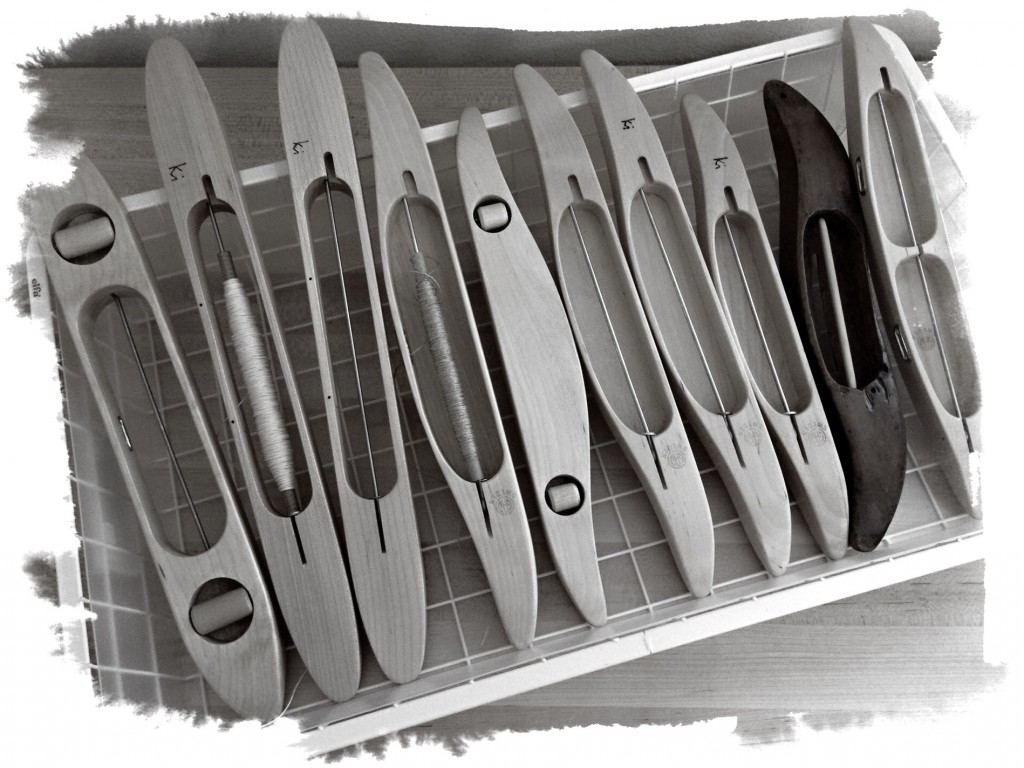
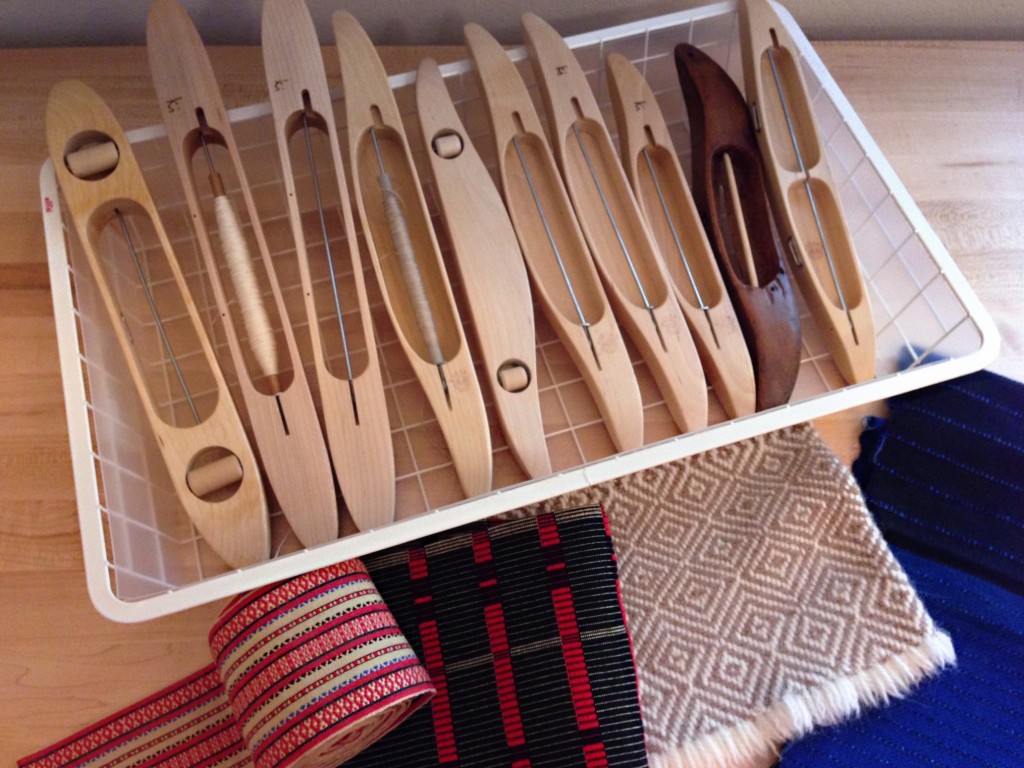
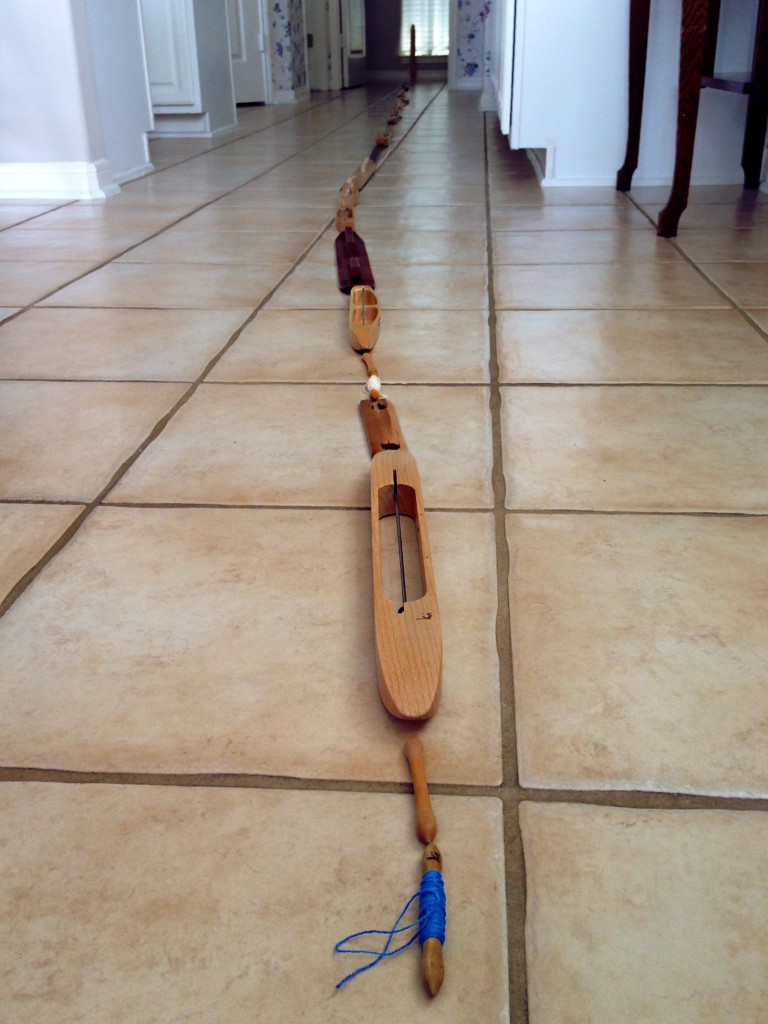
May you fascinated with things that work.
Happy Weaving,
Karen